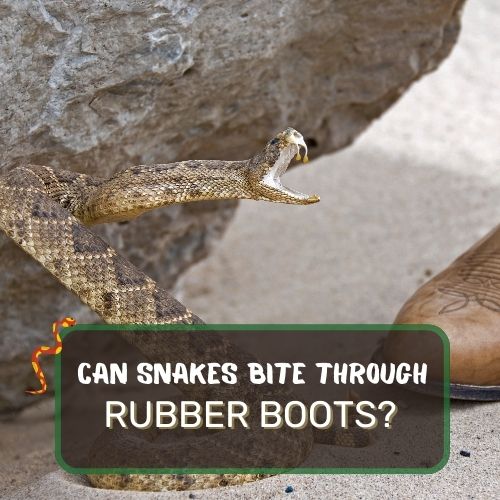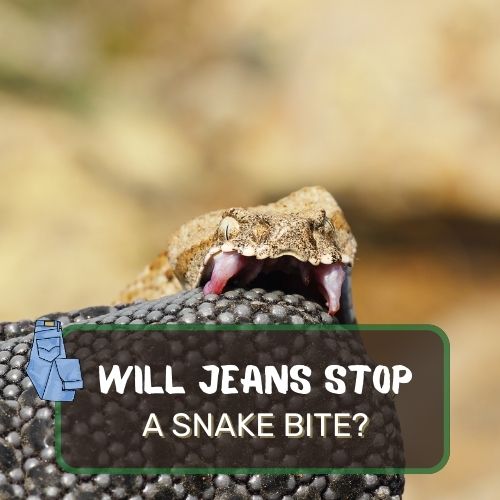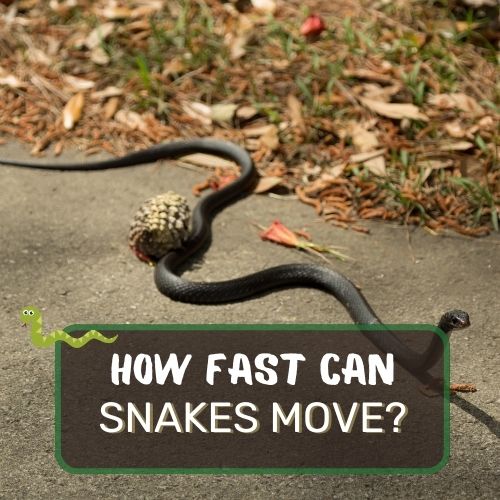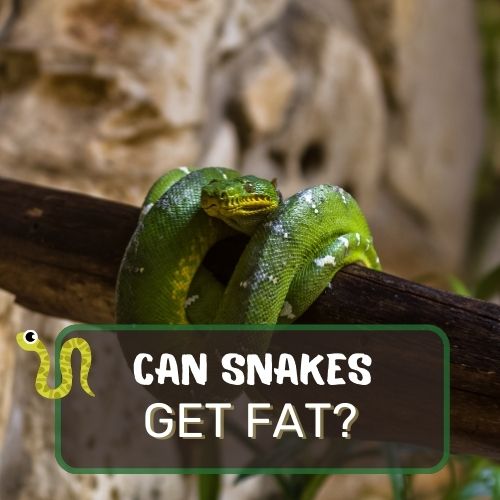
Curious about whether snakes can bite through rubber boots? This article delves into the intriguing question of snake interactions with rubber footwear.
We’ll explore the factors that determine the potential for snake fangs to penetrate rubber, including the strength of snake fangs, the composition of rubber, and real-life scenarios.
By the end, you’ll have a comprehensive understanding of the protection rubber boots can provide against snake bites, insights into alternative protective options, tips for choosing the right boots, and a grasp of snake behavior in bite prevention.
Whether you’re an outdoor enthusiast, hiker, or simply seeking safety tips, this article equips you with the knowledge you need to navigate snake encounters confidently.
Table of Contents
- 1 Is a Rubber Boot Safe Against Snakebites? Short Answer
- 2 Can Snakes Bite Through Rubber Boots? (Long Answer)
- 3 The Effectiveness of Rubber Boots Against Snake Bites
- 4 Alternative Snake Bite Protection Options
- 5 The Role of Snake Behavior in Bite Prevention
- 6 Factors That Affect Snake Venom Delivery
- 7 Tips for Choosing the Right Rubber Boots for Snake Protection
- 8 Personal Anecdotes and Experiences
- 9 FAQ
- 10 Conclusion
Is a Rubber Boot Safe Against Snakebites? Short Answer
Snakes can find it extremely challenging to bite through rubber boots. While not entirely impervious, rubber boots offer a formidable barrier against snake bites. The thickness and composition of the rubber material provide a significant level of protection, making it highly unlikely for snake fangs to penetrate the boots. However, for optimal safety in snake-prone areas, it’s advisable to choose snake-proof boots specifically designed to resist fang penetration, providing an additional layer of assurance against potential snake bites.
Can Snakes Bite Through Rubber Boots? (Long Answer)

When it comes to encountering snakes, our imaginations can conjure up all sorts of unsettling scenarios. But one question that often pops up is, “Can snakes bite through rubber boots?” Let’s dive into this intriguing query and unravel the truth behind it.
Myth vs. Reality: Debunking the Common Misconception
The idea of a snake sinking its fangs through rubber boots like they’re paper might seem like something out of a thriller movie. However, reality paints a different picture. Rubber boots, while not impervious, do provide a substantial barrier against snake bites.
This might come as a surprise, especially considering the formidable reputation of some snake species.
The Strength of Snake Fangs and Their Ability to Penetrate Rubber
Snake fangs are indeed fascinating structures. These sharp, hollow instruments are designed by nature to puncture the skin of their prey and deliver venom. However, the concept of them effortlessly piercing through rubber isn’t entirely accurate.
The composition and thickness of rubber play a significant role in determining whether a snake’s fangs can successfully penetrate.
Factors That Determine if a Snake Can Bite Through Rubber Boots
- Rubber Thickness: The thickness of the rubber material is crucial. Thicker rubber is naturally more resistant to punctures. Modern rubber boots designed for outdoor activities often have multiple layers that add to their durability.
- Snake Species: Not all snake species have fangs that are capable of puncturing rubber. Larger and more robust fangs are generally required for breaking through tougher materials.
- Fang Angle and Pressure: For a snake to bite through rubber, it would need to strike at a perfect angle and apply a considerable amount of pressure. In real-life encounters, this is quite unlikely.
Opinions and Studies on the Topic
Experts in herpetology and snake behavior have conducted various studies to better understand the dynamics between snakes and rubber boots.
The consensus is that while it’s not impossible for a snake to puncture rubber under specific circumstances, such instances are rare and highly unlikely.
In a controlled environment, researchers have tested the ability of snake fangs to penetrate rubber materials commonly used in boots.
The results supported the notion that rubber provides a substantial barrier against snake bites, and the chances of a snake managing to bite through a standard pair of rubber boots are minuscule.
Moreover, snake behavior comes into play. Snakes are more inclined to avoid confrontation rather than attacking potential threats head-on.
In most cases, they will sense the vibrations and disturbances caused by a person’s presence and opt to flee instead of attempting to bite.
The Effectiveness of Rubber Boots Against Snake Bites

Types of Rubber Boots Available in the Market
When it comes to choosing the right footwear for outdoor adventures, rubber boots have become a popular choice. These boots are designed to offer protection against various elements, including potential encounters with snakes.
In the market, you’ll find a range of rubber boots designed for different purposes, from gardening to hiking and even professional snake handling.
Snake-Proof Boots vs. Regular Rubber Boots
Not all rubber boots are created equal, especially in the context of snake encounters. Snake-proof boots are a specialized subset of rubber boots that have been reinforced with additional layers of protective materials.
These boots are explicitly designed to resist the fangs of venomous snakes, providing an extra layer of security.
Regular rubber boots, on the other hand, offer basic protection against general environmental factors but may not have the same level of reinforcement as snake-proof boots.
This distinction is essential when considering the potential risk of snake bites in specific areas.
The Durability and Thickness of Rubber Boots
One of the critical factors determining the effectiveness of rubber boots against snake bites is the durability and thickness of the rubber material. Thicker rubber naturally provides a more formidable barrier against potential fang penetration.
Some modern rubber boots come with multiple layers of rubber or other reinforcing materials to enhance their bite-resistant properties.
Before purchasing rubber boots for snake-prone areas, it’s essential to consider the environment you’ll be in and the potential snake species you might encounter.
Evaluating the thickness and construction of the boots can give you insights into their potential effectiveness in protecting against snake bites.
Alternative Snake Bite Protection Options

Snake Gaiters and Snake Chaps: How They Compare to Rubber Boots
While rubber boots offer a level of protection, there are alternative options specifically designed to provide enhanced defense against snake bites. Snake gaiters and snake chaps are two such choices.
These protective garments are worn over regular clothing and are designed to shield the lower legs from snake strikes.
Snake gaiters are typically lightweight and offer flexibility, making them suitable for hikers and outdoor enthusiasts.
Snake chaps, on the other hand, offer extended coverage, often reaching from the ankle to the thigh, providing comprehensive protection for professionals working in snake-prone environments.
Other Materials That Provide Better Protection Against Snake Bites
In addition to rubber, other materials have been explored to create more effective snake bite protection gear. Some advanced options incorporate kevlar, ballistic nylon, and even metal mesh layers.
These materials offer heightened resistance against snake fangs and are frequently used in manufacturing snake-proof clothing.
The Importance of Proper Fitting and Coverage for Snake Bite Prevention
Regardless of the protection option chosen, proper fitting and coverage are paramount. Ill-fitting gaiters, chaps, or boots can leave gaps that snakes could exploit. Ensuring a snug fit and complete coverage minimizes the chances of a snake finding a vulnerable entry point.
The Role of Snake Behavior in Bite Prevention

Understanding Snake Behavior and Warning Signs
Preventing snake encounters starts with understanding snake behavior. Snakes are generally reclusive creatures and prefer to avoid confrontation. They often exhibit warning signs such as hissing, coiling, or shaking their tails when they feel threatened.
Recognizing these behaviors can help you steer clear of potential conflicts.
Strategies to Avoid Snake Encounters in Snake-Prone Areas
When venturing into snake-prone areas, adopting specific strategies can significantly reduce the risk of snake encounters.
Stick to well-trodden paths, avoid tall grass and underbrush where snakes might hide, and be cautious around rocky crevices and fallen logs, which can serve as snake shelters.
Tips for Staying Safe and Preventing Snake Bites While Outdoors
Staying safe in snake-prone environments requires a combination of awareness and preparation. Here are a few essential tips:
- Stay Vigilant: Keep an eye on your surroundings, especially where snakes might be camouflaged.
- Wear Protective Clothing: Whether it’s rubber boots, gaiters, or chaps, choose the appropriate protective gear for the area you’re exploring.
- Travel in Groups: Snakes are more likely to avoid larger groups of people, so consider traveling with companions.
- Use a Walking Stick: A walking stick can help you probe the ground ahead and alert snakes to your presence.
Factors That Affect Snake Venom Delivery

Venom Potency and Delivery Mechanism of Snakes
Understanding how snake venom works is crucial in comprehending the potential consequences of a snake bite. Snake venoms vary in potency and composition depending on the species.
Venoms can contain enzymes that aid in breaking down tissues and spreading through the body. The delivery mechanism involves injecting venom through the snake’s fangs during a bite.
The Impact of Snake Bite Location on Venom Absorption
The location of the snake bite can influence the speed at which venom is absorbed into the bloodstream. Bites in areas with abundant blood vessels, such as the wrists or ankles, tend to result in faster venom absorption.
Bites in less vascular areas, like the calves, might slow down the venom’s journey into the bloodstream.
How Rubber Boots Can Potentially Hinder Venom Delivery
Rubber boots can offer more than just physical protection against snake bites. In some cases, they might also slow down venom delivery. The thick layers of rubber can act as a barrier, impeding the rapid spread of venom into the bloodstream.
While this doesn’t eliminate the risk entirely, it can provide valuable time for seeking medical attention.
Tips for Choosing the Right Rubber Boots for Snake Protection

Factors to Consider When Selecting Snake-Proof Rubber Boots
Selecting the right snake-proof rubber boots requires careful consideration. Look for boots that have been specifically designed to resist snake bites. Consider the following factors:
- Certification: Look for boots that meet recognized safety standards for snake bite protection.
- Coverage: Boots that cover a significant portion of your lower legs provide better protection.
- Comfort: Choose boots that are comfortable to wear for extended periods, especially if you’ll be outdoors for a long time.
Evaluating the Quality and Durability of Rubber Boots
Quality matters when it comes to protective gear. Assess the construction, material quality, and overall durability of the boots. Reinforced layers, sturdy zippers, and reliable stitching contribute to a boot’s ability to withstand the challenges of snake-prone environments.
Personal Anecdotes and Experiences

Stories from Individuals Who Have Encountered Snakes While Wearing Rubber Boots
Real-life stories often shed light on the effectiveness of protective measures. Many individuals have shared their encounters with snakes while wearing rubber boots. These anecdotes reflect diverse scenarios, from casual hikes to professional fieldwork.
One hiker recounted how a close encounter with a rattlesnake became a defining moment for the choice to wear rubber boots. A wildlife biologist shared an experience where rubber boots played a crucial role in preventing a snake bite during a research expedition.
Lessons Learned and Insights Gained from These Experiences
Personal experiences provide valuable lessons. Individuals who have encountered snakes while wearing rubber boots emphasize the importance of remaining calm and slowly backing away from the snake.
These encounters underscore the value of preparedness and wearing appropriate protective gear, ultimately influencing safer behavior during future outings.
How Wearing Rubber Boots Can Provide Peace of Mind in Snake-Infested Areas
Wearing rubber boots in snake-prone areas offers more than physical protection; it provides peace of mind. Knowing that you have an additional layer of defense against potential snake bites can enhance your confidence while exploring natural environments.
This sense of security encourages individuals to focus on enjoying the outdoors without undue worry.
FAQ
Are Rubber Boots Snake-Proof?
While rubber boots are not completely snake-proof, they do offer a significant level of protection against snake bites. The thickness and composition of the rubber provide a barrier that can impede fang penetration.
What Kind of Boots Protect Against Snake Bites?
Snake-proof boots are specifically designed to protect against snake bites. These boots often feature reinforced layers and materials that are resistant to fang penetration. They are recommended for individuals venturing into snake-prone environments.
What Material Can Snakes Not Bite Through?
Snakes typically struggle to bite through thick and durable materials like leather and rubber. Boots made from these materials provide a substantial barrier against snake bites.
What Shoes Can Snakes Bite Through?
Snakes can potentially bite through thin and less resistant materials, such as cloth or soft fabrics. Sneakers and shoes with thin soles are generally less effective in preventing snake bites.
What Should I Wear to Prevent Snake Bites?
To prevent snake bites, wear snake-proof rubber boots or other protective footwear designed for snake encounters. Consider wearing long pants and avoiding high grass and underbrush, where snakes might be concealed.
Conclusion
Navigating the potential risks of snake encounters requires a combination of knowledge, preparation, and the right gear. While rubber boots offer a level of protection, understanding snake behavior and adopting safe practices while outdoors is equally essential.
From snake-proof boots to snake gaiters and chaps, there’s a range of options to choose from based on your needs and preferences.
Real-life experiences, scientific insights, and practical tips come together to form a comprehensive guide for those venturing into snake-prone areas.
By prioritizing safety, staying informed about snake behavior, and making thoughtful choices regarding protective gear, you can embark on outdoor adventures with confidence, appreciating the natural world while minimizing potential risks.
Remember, the key to enjoying the outdoors is being well-prepared and respectful of the creatures that call it home.




0 Comments